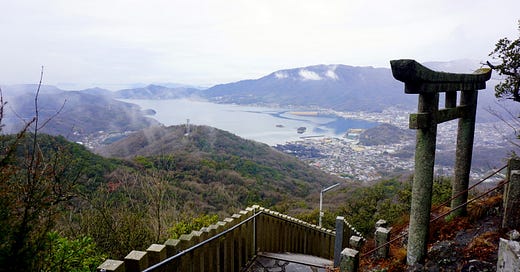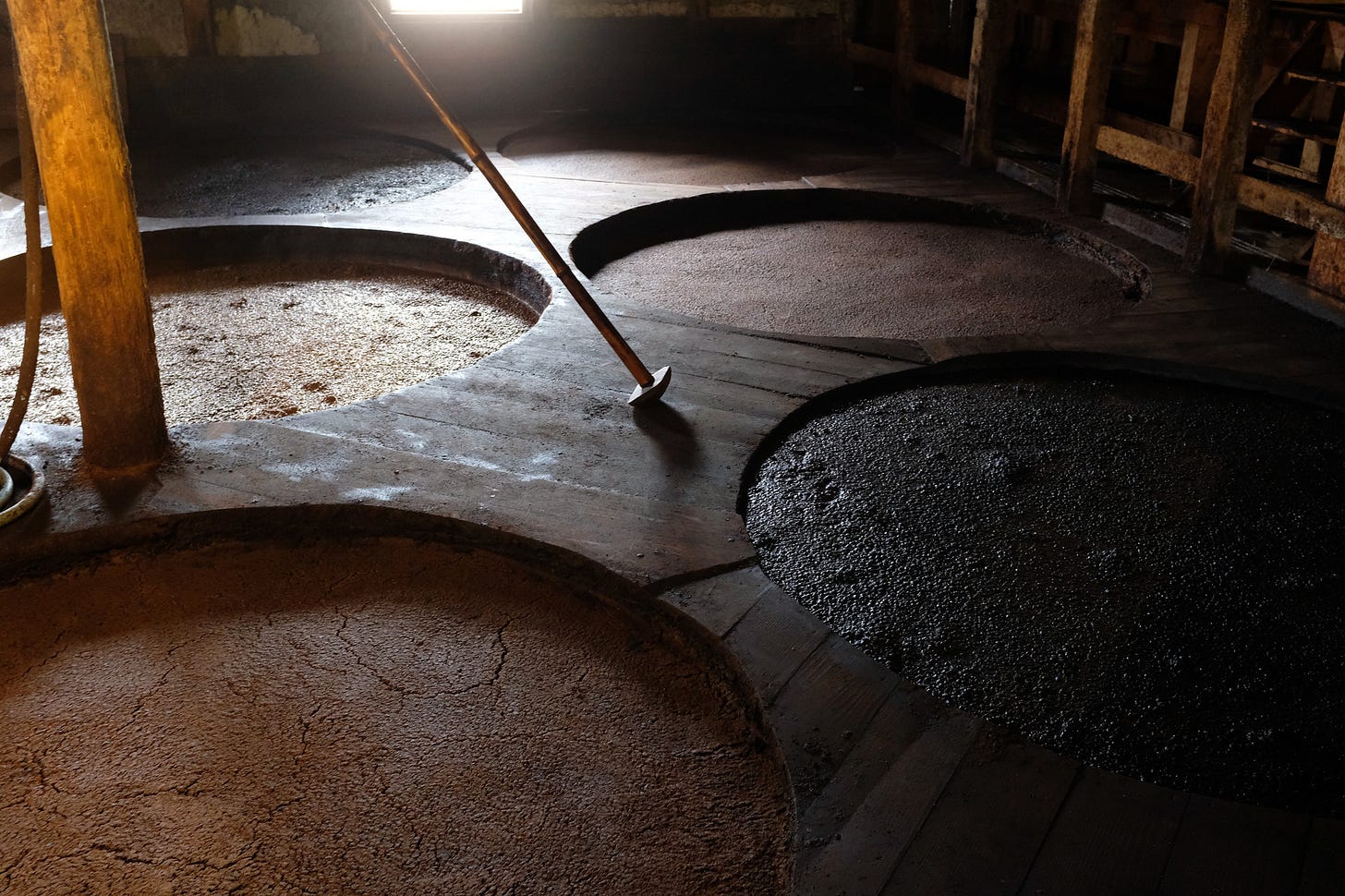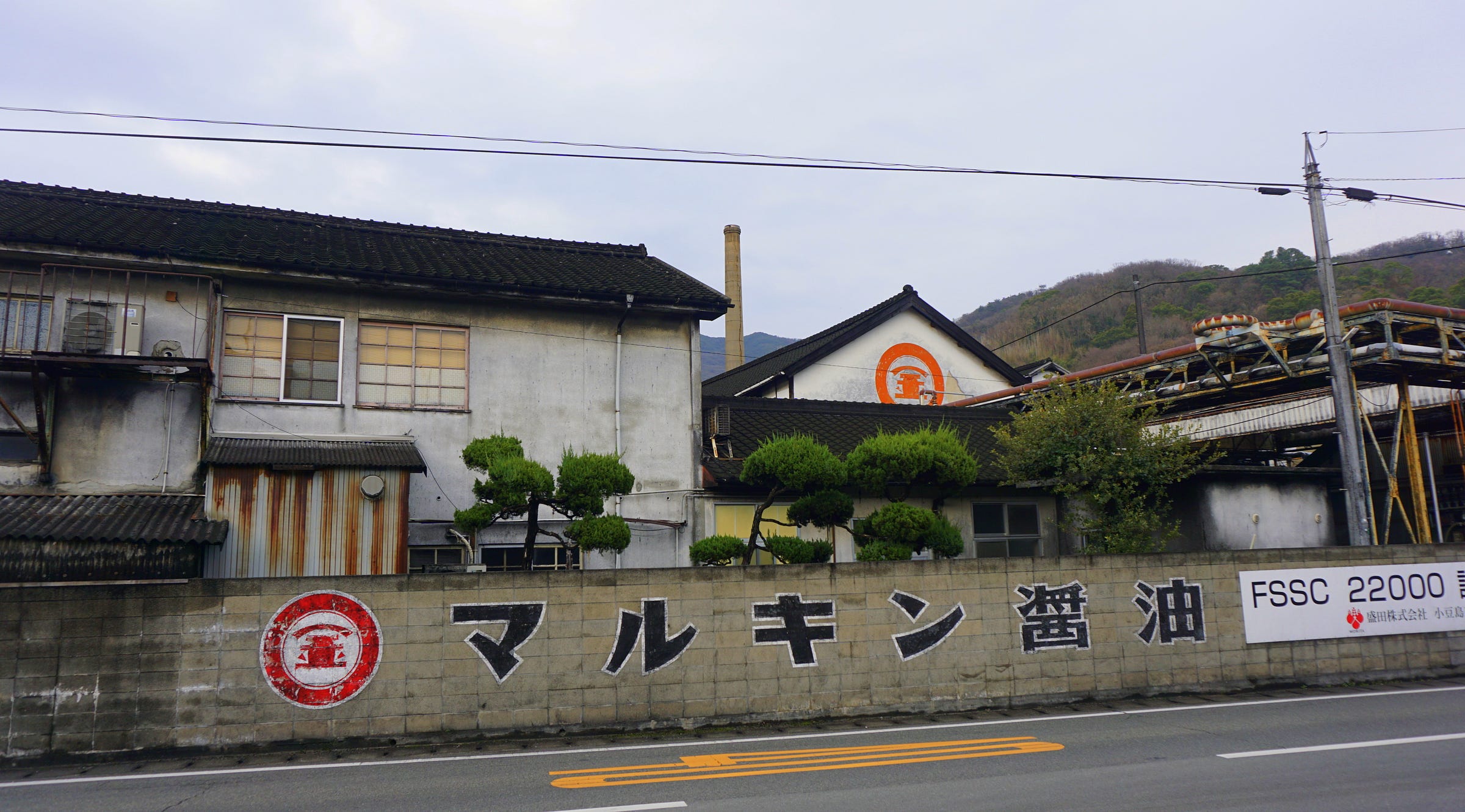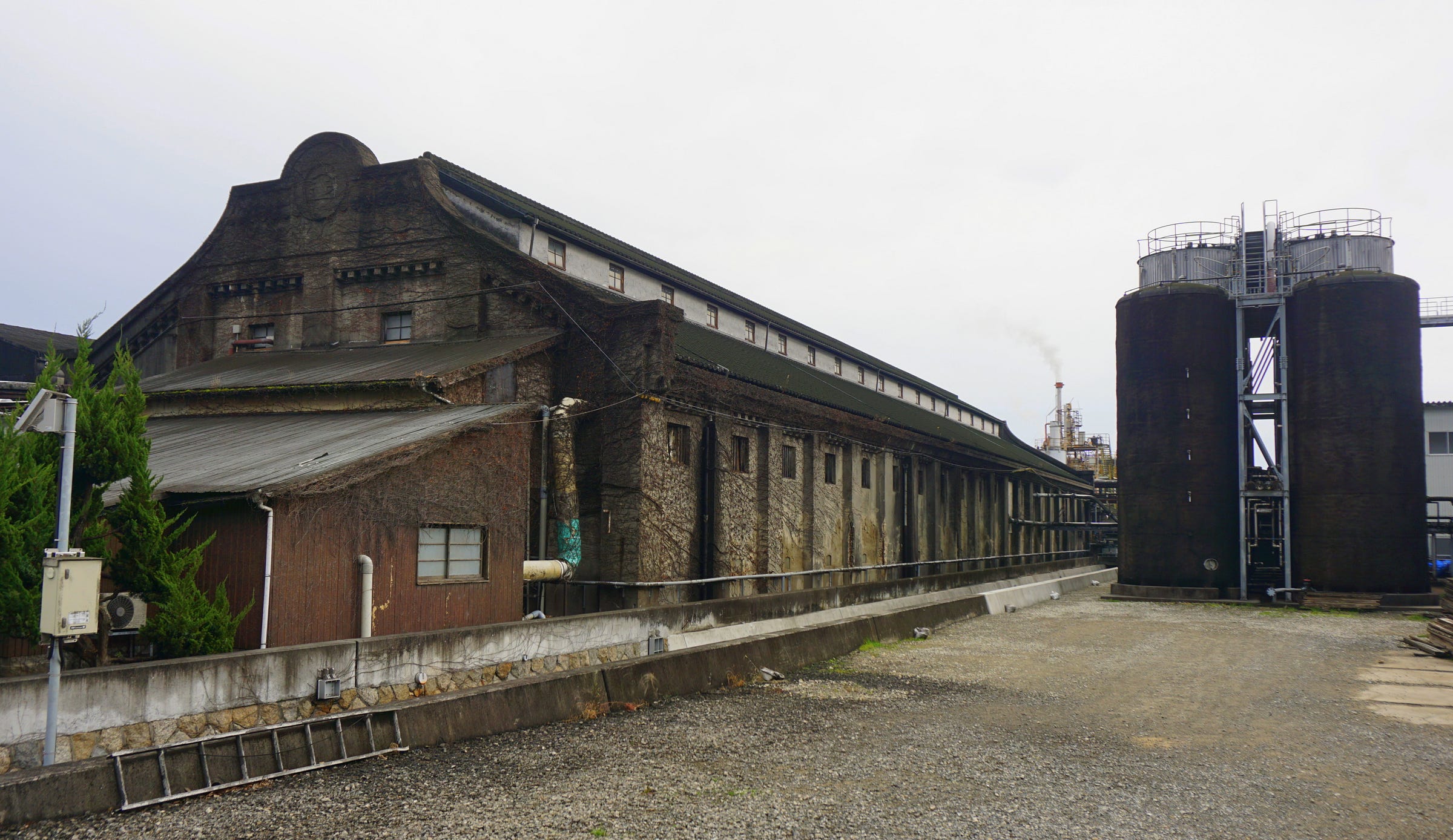Dear readers, this is the first part of my recent trip to Shodoshima, Kagawa Prefecture. I hope you like it.
On February 1st I found myself on a ferry bound to Shodoshima. Located off the coast of Shikoku, an hour away from Takamatsu, this is the second-biggest island in Japan’s beautiful Seto Inland Sea and has a population of about 30,000.
Ask the Japanese about Shodoshima and they will mention two things: olives and – if they are movie fans – Twenty-Four Eyes, a 1954 film by Kinoshita Keisuke that was shot on the island. Indeed, Shodoshima is one of Japan’s premier olive-growing areas (it was the first place in the country to successfully grow olives) and is sometimes known as Olive Island). However, what took me here was neither olives nor films but shoyu (soy sauce).
There are four major shoyu production areas in Japan, and Shodoshima is one of them. I first learned about it two years ago when I interviewed Kuroshima Keiko, a Shodoshima-based shoyu sommelier. According to Kuroshima, the islanders began to make shoyu more than 400 years ago, in the early Edo period, and the local shoyu industry grew so much that between 1878 and 1886 there were about 400 brewers.
Shodoshima was blessed with both an ideal location and climate for making shoyu. The island’s warm and dry climate and clean air are particularly suitable for the growth of koji mold and the ripening of moromi (unrefined shoyu), which are essential to making a good product. The island is also ideally located between the commercial port of Sakai, in Osaka, and the soybean- and wheat-producing island of Kyushu.
At that time, sea transportation was considerably more convenient than land transportation, and the people of Shodoshima took full advantage of the situation. Since Shodoshima only has a small arable land area which is not enough to grow rice, they made instead somen noodles and salt. These ingredients were then exported to Kyushu in exchange for soybeans and wheat, which they used to make shoyu. Then, the finished product was shipped to Kansai and the large consumption areas of Kyoto and Osaka.
Unfortunately, the 20th century saw the end of the golden age for Shodoshima. The local shoyu industry went into a slow but steady decline as the relatively small brewers struggled against competition from giant national companies such as Kikkoman that applied industrial methods to shoyu making. Today only 20 of the original 400 breweries are left.
However, though the number of producers has fallen drastically, the island continues to supply almost half of the production of Kagawa Prefecture. Arguably one of the most successful local companies is Yamaroku Shoyu, a brewery with a long history, distinctive production methods and an open-minded approach towards other cultures. Today, headed by fifth-generation brewer Yamamoto Yasuo, the company founded around a century and a half ago has chosen to build on tradition to create a nationwide community of people who aim to keep traditional shoyu making alive.
Tradition for shoyu makers means aging shoyu in kioke (wooden barrels), a method that commercial companies discarded long ago in favor of modern techniques and materials. Twelve years ago, Yamaroku’s Yamamoto-san started an annual event focusing on wooden barrel-making in which brewers and food specialists could gather to network and share information. The so-called Kioke Summit has proved very popular and has seen a steady rise in participants, so I decided to see with my eyes what all the fuss was about.
I was still thinking about Shodoshima’s fascinating history when my ferry finally arrived at Sakate Port and I was welcomed by a pervasive shoyu aroma and a strange beast – one of the contemporary art sculptures that are scattered around the island (Shodoshima, after all, is close to “art island” Naoshima).
Instead of taking a bus or taxi, I decided to walk to Yamaroku, where I would spend the next two days. This way I could explore the south-east part of the island and its storied brewery district.
There are shoyu makers of various sizes around here. The undisputed heavy-weight champion is Marukin, an industry leader that boasts a huge factory, a museum and a shop selling shoyu-flavored soft serve ice cream. But most of the makers are small family businesses.
Walking around Hishio no Sato (the Home of Shoyu), as this area is still known, feels like time-traveling as many of the breweries, easily recognizable by their dark brown wooden walls, were built in the Meiji period. Indeed, Shodoshima is home to the largest collection of pre-modern shoyu brewery buildings in Japan.
This is a place that rewards curious walkers who like to explore its many narrow winding streets and discover little jewels like Shinkoji, a Buddhist temple that is home to two giant trees, a juniper and a camphor tree, that are said to be 400 years old.
When I finally arrived at Yamaroku I was welcomed by two huge kioke. I had already seen them in pictures but seeing upfront the staggering size of these objects, which can hold up to 6,000 liters of shoyu, is an unforgettable experience. Kioke preparation is especially popular here, and it is said that more than one-third of the existing wooden barrels in Japan are on Shodoshima. In the next two days I would have plenty of time to study and admire those beautiful objects and see how they are made.













At first glance, I read "Adventures in Sodoma", and thought "Wow Gianni, you're going hardcore!" I really enjoyed your story and can't wait for the second part. That olive grove reminds me of Southern Italy.